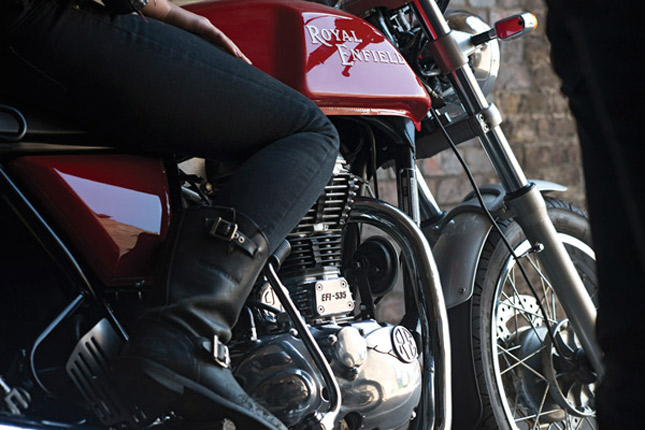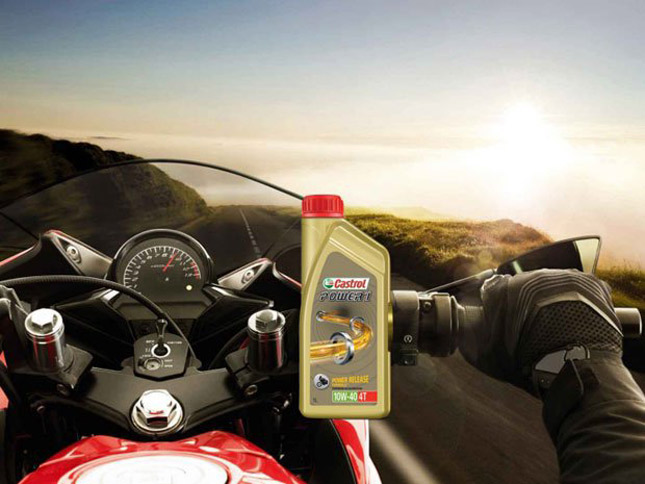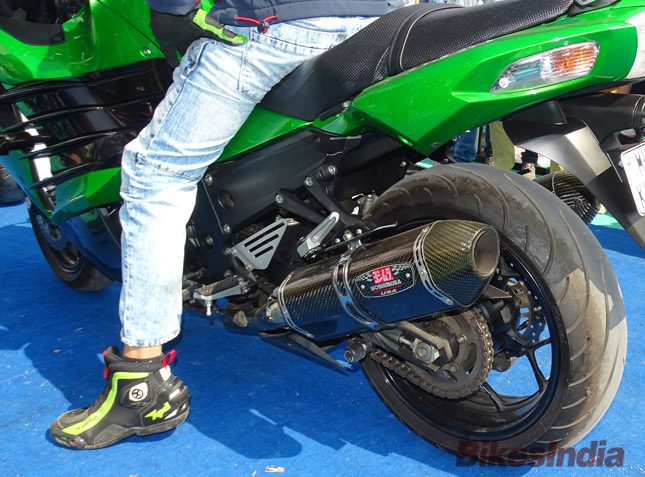 Brace yourselves; winter is coming! In the literal sense of the term. It is time of the year when our beloved bikers are done waiting for the monsoon to end and it is time of the beginning of the riding season for many, including truly yours. The serene joy of riding in the cold is a treat for many, and to be honest gets with it, its own set of challenges. Now, handling the cold issues is something every rider manages according to the way they feel comfortable. On the other hand, the technical issues that occur with the bike are common for all. So here is our comprehensive list to tackle the menace of the cold engine, a cold start.
Brace yourselves; winter is coming! In the literal sense of the term. It is time of the year when our beloved bikers are done waiting for the monsoon to end and it is time of the beginning of the riding season for many, including truly yours. The serene joy of riding in the cold is a treat for many, and to be honest gets with it, its own set of challenges. Now, handling the cold issues is something every rider manages according to the way they feel comfortable. On the other hand, the technical issues that occur with the bike are common for all. So here is our comprehensive list to tackle the menace of the cold engine, a cold start.1. Go for a Kick
The sad part about this is majority new bikes are launched without a kick start option. As much as I appreciate the thought to reduce rider effort to get the bike started, I loathe the part where the rider cannot get his machine started when the battery juices are not up for it. Getting a bike started with electric can be draining on the battery, especially in cases of repeated failed attempts. A kick start here comes handy. It is recommended that for every interval of starting a bike, where the stopping duration is over 6 hours, the bike should be kick started for optimum performance. This ensures longevity of the battery and the engine as well. Too bad for the bikes without a kick starter, but for all others, this is the go-to option for you.
2. Providing Choke
This is not applicable for bikes with electronic fuel injection. For everyone else, make use of that tiny lever somewhere on the bike. For the exact location based on the model, refer the manual you received with the bike at the time of delivery. In case you do not know how to use a choke, simply pull the level to ‘ON’ and start the bike. The bike might start off with high revs or start easy and then move to high revs. Keep the choke in ‘ON’ until the engine is sufficiently heated and then switch it back to ‘OFF’. It is not recommended to ride the bike with the choke on, or else, the engine will be flooded and the fuel economy recorded will be the poorest you ever recorded owing to higher revs at idle. Also, it is recommended to not keep the choke on when the bike is off and stationary, lest the engine block will be flooded with fuel.
3. Switch to a Low Grade Engine Oil
We have previously covered the concept of engine oil grading. High grade engine oils are designed to suit warm climate regions. So if you happen to find issues starting the bike because your engine oil is losing its optimum viscosity, opt for the one with low temperature range. This will make sure your engine is protected even if the ambient temperature drops absurdly low. And as for cold start issues; they will be sorted out too.
 4. Tune Engine for Rich Mixture
4. Tune Engine for Rich MixtureIn carburetor tuning, there is a fuel-air mixture level which is set for optimum performance. If the fuel level is more as compared to the air, then the mixture is termed rich. It helps make more power but returns less mileage. On the other hand, if the air density is more than the fuel level, the mixture is terms as lean. It provides less power and more economy, but it is recommended to not make it lean as the implications on the engine in the long run are on the negative end. A rich mixture will ensure more fuel being burnt and more energy being generated, which includes heat and hence can help keep the engine start of easy and run smooth.
5. Clean Spark Plugs
This is more of a maintenance aspect of the bike. Clean sparkplugs will ensure proper ignition and starting. This is application even in regular periods and not only winters. On the other hand, unclean sparkplugs might lead to misfire and hence starting troubles, especially in colder climate.
6. Do Not Stress the Battery
If the bike fails to start in the first try, do not keep the ignition going at it for prolonged periods. This will drain the battery pretty quick and result in major issues in the future. The idle solution is to press the starter for 5 seconds at a time and provide a 20 seconds cool off period before the next try. This way the battery is not stressed and the ignition unit receives plenty of time to build up the charge for a proper try the next time.
7. Let Engine Idle Before Moving
Many people have the habit of starting the bike, shifting into gear and getting moving without giving the engine enough time to warm up. Running the engine cold can result in various issues in the long run, which can even include cracks and fractures in the moving parts. The ideal solution is to let the engine idle for 2-3 minutes in which time, the engine warms up, the engine oil gets sufficient time to lubricate the entire engine, including the clutch and gearbox, and finally one can get moving. Practicing this routine can provide you maximum results in terms of smoother engine, and low maintenance costs. Also, it helps the engine start up quicker the next time you try a cold start.
 8. Cover Bike with Insulating Material
8. Cover Bike with Insulating MaterialWe do have a habit of covering out bike to keep the dust and dirt out, but having an insulating material for the same can ensure the engine does not lose its heat at quicker pace. This ensures the engine can retain its warmth for a prolonged period of time resulting in a warmer engine the next morning and easier starts.
9. Service Bike on Time
Getting your bike serviced before the winters can ensure everything in the bike is working perfectly, and a healthy bike is easier to start even in colder climatic conditions. Speaking from personal experience, getting the bike services right before the beginning of each season helps rid the bike of any issues that one might experience through the season.
10. Use Pure Quality Fuel
Adulterated fuel has its own belly aches when it comes to getting a bike started in colder climates. Ensure filling your tank from an outlet which provides pure fuel. Do not hesitate to ask around for references and also to travel a bit longer distances to fill in. Pure fuel can guarantee easier cold starts when compared to adulterated fuel. It does not have to be performance improving fuel with additives. Regular unleaded, but pure can do the trick for you.
Wow! That is quite a list. Pretty sure many of you might know some of the points mentioned in the list, but do not hesitate to share it without your friends and colleagues who ride a bike and have troubles with cold starts. Ensure your bike is in proper shape, take all the precautions and wish you all a very happy winter biking season from BikesIndia.
By: Pratik Patole











